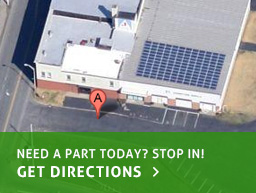Original article appeared on www.huffingtonpost.com on 5/2/16 byt Ed Krapels. Click here to view the original article.
Generating sufficient electricity with clean energy is a big lift. It requires having the attitude John Kennedy manifested about going to the moon: “we do this not because it’s easy; we do it because it is hard.” To make it even harder, in addition to the 50 by 30 commitment, Governor Cuomo has said no to fracking and wants to close one nuclear plant (Indian Point) while keeping others open with new subsidies. Indian Point is a huge source of zero carbon electricity, so shuttering it commits the state to an even more ambitious program of clean energy resources and infrastructure development.
We’ve examined how the state could meet its 50 by 30 goal. Large quantities of clean power can be achieved by combining wind, solar and stored power, of which large-scale hydro is by far the most economical. Because the New York grid, like others in the region, was essentially built for coal, oil and gas-fired generators, these bundles of wind-and-hydro power will be delivered to market via new and enhanced delivery infrastructure.
This clean power future is feasible. It’s within our grasp. Renewable energy is all around us, in the breezes we feel and the sunshine we enjoy. Hydro to firm up these intermittent resources already exists in New York and more can be imported from Canada. Once all these terrestrial resources have been tapped, New York can turn to offshore wind, which also has immense potential.
Clean energy commitments have become more attractive politically for two reasons. First, developing wind and solar within the state of New York promotes economic development in the north and west of the state, where such development is essential. Second, thanks to sustained technological progress, clean energy supply as well as more efficient energy demand are more and more economical. “Outsourcing” power production to natural gas is no longer necessary: gas prices are inevitably volatile, so while natural gas is cheap today, it will not always be cheap. Wind and solar and hydro generation, once built, rely only on “fuels from heaven” — the free wind and solar and hydro resources that are all around us.
So New York’s clean energy commitment is a great economic strategy, a fact that’s not lost on Hillary Clinton or Bernie Sanders, both of whom are committed to national Clean Power Plan implementation. However, it’s likely that, if elected, both Donald Trump and Ted Cruz will scrap the Clean Power Plan because, in Senator Cruz’s words, “The scientific evidence doesn’t support global warming.” Yet in a multitude of polls, that point of view is not held by the majority of New Yorkers. So as an energy policy, scrapping the Clean Power Plan — federal or state version — is a loser of an idea.
Here’s the truth: Developing this kind of new grid for clean power should not be a political wedge issue.
If the rest of the country implements New York’s approach to the Clean Power Plan, hundreds of billions of dollars in capital will be invested by the private sector, and hundreds of thousands of new jobs will be generated by the cleantech energy sector. We’ll replace dependence on volatile and depletable fossil fuels with dependence on stable and sustainable renewables. Governor Andrew Cuomo has started this transition, the energy discussions in the primaries should shed further light on this process, and the presidential election this fall will determine whether the New York model for combating climate change will be embraced or rejected across the country.
 https://www.google.com/url?sa=i&rct=j&q=&esrc=s&source=images&cd=&cad=rja&uact=8&ved=0ahUKEwi_9arPiL7MAhXMMz4KHYZBCy4QjB0IBg&url=https%3A%2F%2Fwww.dot.ny.gov%2Frecovery%2Fsponsors%2Fhighways&psig=AFQjCNGYbuVVJvYFx4cfr2KScKK4CjaOCA&ust=1462370447840019
https://www.google.com/url?sa=i&rct=j&q=&esrc=s&source=images&cd=&cad=rja&uact=8&ved=0ahUKEwi_9arPiL7MAhXMMz4KHYZBCy4QjB0IBg&url=https%3A%2F%2Fwww.dot.ny.gov%2Frecovery%2Fsponsors%2Fhighways&psig=AFQjCNGYbuVVJvYFx4cfr2KScKK4CjaOCA&ust=1462370447840019









